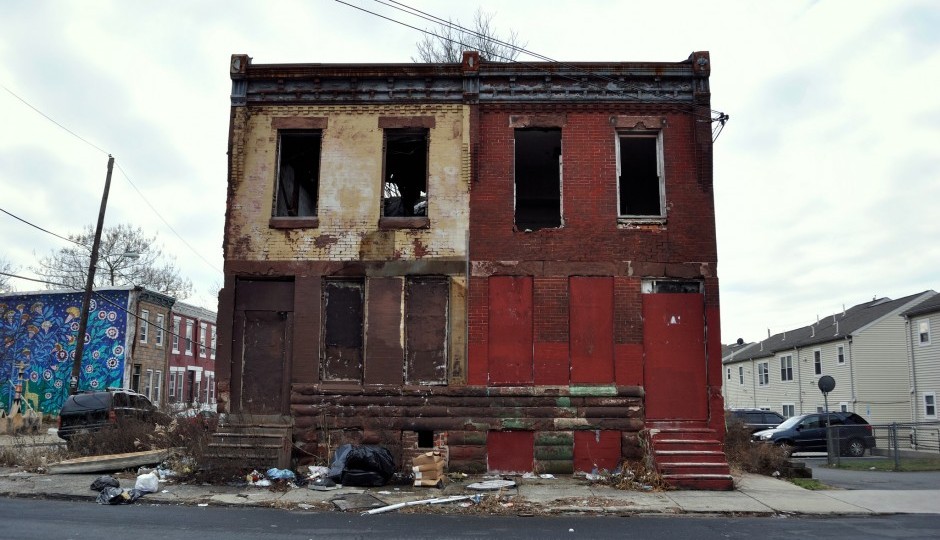Idea: Redevelop Distressed Neighborhoods With Venture Capital and 401(k)s

Investment desperately needed. | Photo by Jukie Bot on Flickr, Creative Commons License.
Based on a lot of macro-economic indicators, the country has rebounded quite impressively in the years since the Great Recession. The Dow Jones Industrial Average has more than doubled since 2009. National unemployment stands at 5.5 percent — almost half of what is was during the darkest days. The GDP is climbing past pre-recession levels.
But it’s no mystery that the recovery has been far less robust in some areas than others, such as Philadelphia. The city has actually lost high-wage jobs in the years immediately after the recession, and overall job growth remains relatively low.
Part of the problem are the “historically low levels of new business ventures being established,” according to a new thought-provoking white paper published by D.C. think tank The Economic Innovation Group. The authors posit that distressed cities need more private investment — specifically, a new system of steering private investment toward targeted areas that diverges drastically from our current approach of using tax subsidies.
Our key observation is that existing and prior approaches have not harnessed the power of intermediaries such as private equity firms, banks, venture capitalists, mutual funds, and hedge funds. By focusing on often small individual businesses, policies have implicitly required an unrealistically large amount of coordination among potential investors, and hence, have failed.
The authors — Jared Bernstein, from the liberal Center on Budget and Policy Priorities, and Kevin Hassett, from the conservative American Enterprise Institute — argue that federally-subsidized programs economic development programs have been ineffective. They take aim at “empowerment zones” and “renewal communities” — which offer modest tax-relief incentives, such as a 20 percent tax credit for businesses on the first $15,000 wages paid to employees — and contend that, overall, the results are unimpressive. “Unfortunately, research into the effects of these enterprise zone programs in the U.S. has found at best mixed results, with little consensus in the literature as to whether they are beneficial,” they write.
The same could be said of Pennsylvania’s Keystone Opportunity Zone initiative, which will sound familiar to any fan — or detractor — of the Philadelphia Union, whose stadium was built with KOZ subsidies. Philadelphia’s KOZ record is also mixed.
The authors propose an alternative system, one “analogous to that of a venture capital firm or mutual fund company.” Essentially, the paper imagines a world in which depressed areas are aided by mutal-fund-like structures, funded by wealthy individuals and organizations who’d pool their funds to invest in projects or businesses located within distressed communities.
They contend that this system would reduce investment risk, partly by offering some tax advantages (more on that below) and partly by giving investors the chance to sink a smaller slice of capital into distressed neighborhoods than would be required to, say, build a shopping complex all their own in Strawberry Mansion.
Why would investors take such a risk? Hassett told Governing “there’s actually a profit to be made from turning these places around.” And how would this work? The white paper elaborates:
These specialized investment vehicles, which could raise capital from a mix of individual and institutional investors, would operate in targeted locales, and special tax provisions that are established for them would apply so long as the investments stayed within qualified geographic areas. One key advantage is that they are structured so as to allow partners to pool their resources and invest in numerous projects at any given time in a highly nimble fashion.
These investment vehicles could be offered tax breaks on capital gains, so long as the new capital is reinvested back in the targeted area. Or it could work like a 401(k), where investors could set aside earnings on a pre-tax basis, and only pay up when a capital gain is cashed in.
The idea is to minimize risk and maximize the control of private investors, concerns which have deterred some from distressed areas after the recession. Their proposal is pretty loose right now, as they acknowledge. Where should these new investment vehicles be used? And how, precisely, should be structured? They don’t answer those questions, or others. But it strikes Citified as an interesting concept.